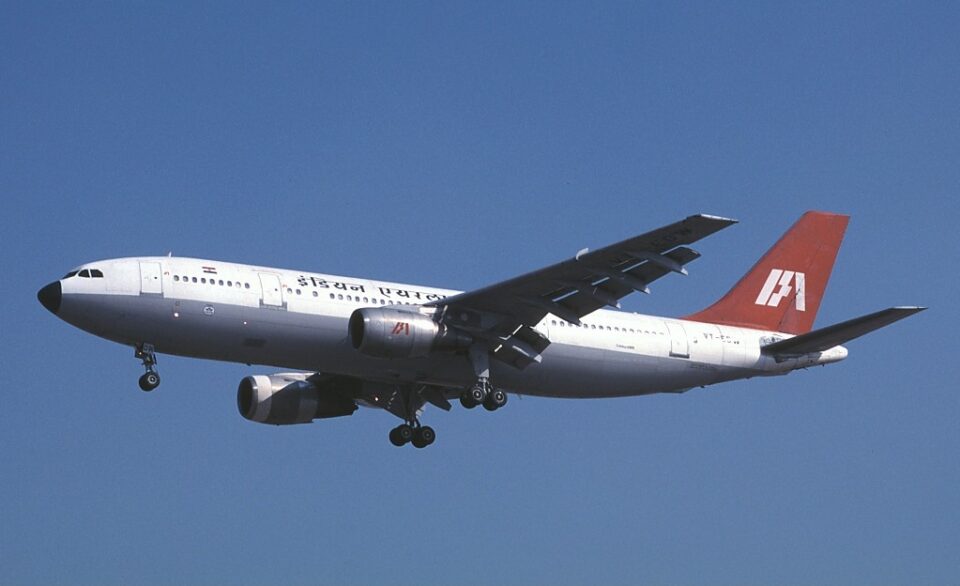Aviation
The Untold Story behind IC 814 The Kandahar Hijack

The Indian Airlines Flight 814 hijack, also known as IC 814, remains one of the most harrowing and controversial events in Indian aviation history.
The incident, which unfolded from December 24, 1999, to January 1, 2000, has recently been brought back into the spotlight with Anubhav Sinha’s Netflix series, IC 814: The Kandahar Hijack, released on August 29, 2024. aviation movies on netflix Adapted from the book Flight Into Fear by Devi Sharan and Srinjoy Chowdhury, the series delves into the seven-day ordeal that captured global attention.
Top 10 Most Well-Connected Airports Globally in 2024
The Hijacking: A Brief Overview
On December 24, 1999, Indian Airlines Flight 814 departed from Tribhuvan International Airport in Kathmandu, Nepal, bound for Delhi, India. Aboard were 180 passengers, including Roberto Giori, the then-owner of De La Rue Giori, a major player in the world’s currency-printing industry. Shortly after takeoff, the flight was hijacked by five armed men, who took control of the plane and its occupants.
The hijackers’ demands were clear: they wanted to be taken to Afghanistan, where they sought to negotiate the release of their comrades imprisoned in India.plane movies on netflix, As the plane was rerouted and forced to land in multiple locations, including a final stop in Taliban-controlled Kandahar, the crisis unfolded over the course of a week.
Key Figures and Events
Among the passengers was Shashi Bhushan Singh Tomar, a RAW officer and the then First Secretary in the Indian embassy in Kathmandu. Tomar was connected to N.K. Singh, secretary to then Prime Minister Atal Bihari Vajpayee. His presence added a layer of complexity to the already tense situation.
During the hijack, the hijackers demanded that passengers express their gratitude to the Afghanistan government. They collected money from the passengers, which was later given to Anuj Sharma, who was tasked with commissioning a memento of the hijacking for a museum in Kandahar.
7 best airplane movies to watch on Netflix
Indian authorities faced numerous challenges. Taliban fighters surrounded the aircraft to prevent any military intervention from India. This situation was compounded when Indian chief negotiator Ajit Doval and his team discovered the presence of two Inter-Services Intelligence (ISI) officers at the scene, one a lieutenant colonel and the other a major. Doval later suggested that the hijackers’ support from the ISI made a swift resolution of the crisis more difficult.
The Resolution
The standoff reached its climax on January 1, 2000, when, after eight tense days, the Indian government made the controversial decision to release three terrorists—Ahmed Omar Saeed Sheikh, Masood Azhar, and Mushtaq Ahmed Zargar—in exchange for the hostages’ freedom. This resolution, though saving the lives of the passengers, sparked widespread criticism and debate regarding the negotiation tactics and the implications of releasing high-profile terrorists.
Cultural Impact
The hijacking remains a significant historical event, not just because of its dramatic unfolding but also due to its broader implications for international security and terrorism. Anubhav Sinha’s series sheds light on this complex narrative, providing viewers with an in-depth look at the tactical, diplomatic, and personal challenges faced during the crisis. The series captures the chilling and thrilling aspects of the hijacking, offering a compelling story that was previously untold in such detail.

Aviation
Two Russian Schoolboys Arrested for Destroying Mi-8T Helicopter

In a shocking act of sabotage, two Russian teenagers, aged 13 and 14, have been arrested for burning down a Mi-8T military helicopter at an airport.
The boys, Timur and Sasha, reportedly used flammable liquid and cigarettes to ignite the helicopter, resulting in a fiery explosion that caused severe damage, leaving the aircraft almost completely destroyed.
A Costly Mistake: Passenger Pays for Fuel After Disruptive Flight
According to reports by Russian media outlet BAZA, which has close ties to law enforcement, the teenagers claimed they were promised around £42,000 through the Telegram messaging app in exchange for carrying out the attack.
While the source of the offer remains unknown, one theory suggests the boys may have been motivated by the hope that the act could somehow help bring home the father of one of the teenagers, who had been conscripted to fight in the war in Ukraine.
Egypt has signed an agreement with China to purchase J-10C fighter jets
The destruction of the £1 million helicopter led to their immediate arrest, as the boys suffered significant facial and hand burns during the incident. After fleeing the scene, they sought medical assistance, which ultimately revealed their involvement in the attack. Both teenagers are now under armed guard while receiving treatment in a local hospital.
Authorities revealed that this was not the first act of sabotage carried out by the boys. Earlier, they confessed to being paid £250 to destroy a mobile phone mast, which they successfully completed before targeting the helicopter. During their interrogation, they admitted to receiving 30,000 rubles for setting fire to the cell tower and were promised 5 million rubles for the helicopter attack.
The Mi-8T helicopter, used for military purposes, was reportedly left “almost completely wrecked,” with only the tail remaining intact following the explosion.

 Travel2 months ago
Travel2 months agoAir India to Expand US Operations with Three New Routes After a Decade

 Aviation3 weeks ago
Aviation3 weeks agoNew EU Carry-On Rules Begin September 2024: What to Expect

 Airlines2 months ago
Airlines2 months agoAir India Rolls Out A350s for Delhi-New York JFK and Newark Routes

 Aviation6 days ago
Aviation6 days agoBoeing confirms 797: A New Era for Mid-Size Aircraft

 Travel2 months ago
Travel2 months agoWhy We Should Avoid These Stamps in a Passport

 Aviation1 month ago
Aviation1 month agoMeet WindRunner: The World’s Heaviest and Largest Aircraft Ever Built

 Airport2 months ago
Airport2 months agoTop 10 Largest Airports in the World by Size

 Aviation1 month ago
Aviation1 month agoComac C919 Moves Closer to Securing EU Certification with EASA







You must be logged in to post a comment Login